Cannabis News
Criminalizing Cannabis Doesn’t Work at All
Published
10 months agoon
By
admin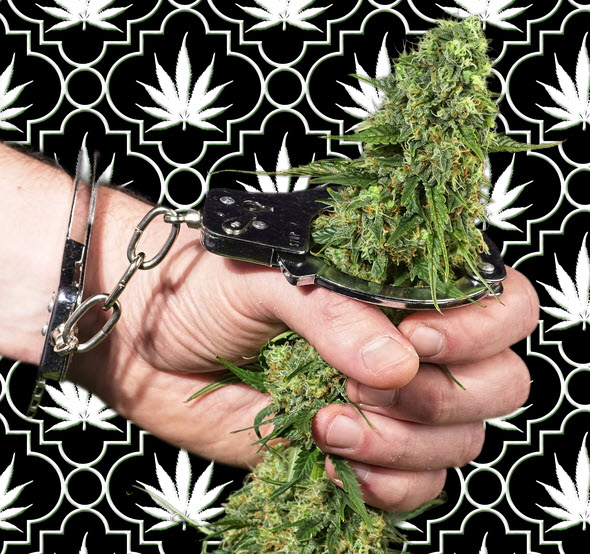
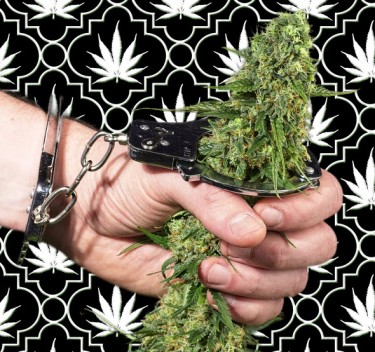
Why criminalization doesn’t curtail consumption
The spirit of prohibition is rooted in the desire to restrict individuals from accessing certain substances or engaging in particular activities deemed harmful or undesirable by those in power. At its core, prohibition is a paternalistic approach that employs the threat of severe consequences, often in the form of state-sanctioned violence, to discourage and punish those who dare to defy the established rules. If we were to remove the veneer of governmental authority from this equation, the true nature of prohibition would be laid bare as a hostile and coercive scenario, where the individual’s autonomy is subjugated to the whims of the ruling class.
Proponents of prohibition argue that this looming threat of violence is a necessary evil, a means to an end in the quest to curtail consumption and send a clear message to impressionable youth that certain behaviors will not be tolerated. They claim that by instilling fear of legal repercussions, society can effectively deter individuals from engaging in prohibited activities, thereby protecting them from potential harm. “The law will punish you!” becomes the rallying cry of those who believe that the heavy hand of the state is the only way to maintain order and public health.
However, a recent Gallup poll has called into question the very foundation upon which the edifice of prohibition is built. The survey found that rates of marijuana use are nearly identical in states that have legalized the substance compared to those that continue to maintain its prohibition. This startling revelation suggests that criminalization has little impact on actually curbing consumption, challenging the long-held belief that the threat of punishment is an effective deterrent.
In light of this new evidence, it is time to ask ourselves: isn’t there a better way? If prohibition fails to achieve its stated goal of reducing substance use, while simultaneously perpetuating a system of violence and oppression, should we not seek alternative approaches that prioritize harm reduction, education, and individual liberty? The spirit of prohibition may be deeply entrenched in our society, but the cracks in its foundation are beginning to show, inviting us to imagine a future where the individual’s autonomy is respected and evidence-based policies prevail over fear-mongering and coercion.
The recent Gallup poll on marijuana use in the United States has shed new light on the effectiveness, or lack thereof, of drug prohibition. The survey, which involved interviews with 6,386 U.S. adults from November 30, 2023, to December 8, 2023, found that rates of marijuana use are nearly identical in states that have legalized the substance compared to those that continue to maintain its prohibition. This finding strikes at the heart of the argument that criminalization is necessary to curb drug consumption.
According to the poll, one in 10 American adults reported using marijuana 10 or more times in the past month, while one in five admitted to using cannabis at least once during the same period. When broken down by state legal status, the data revealed that 9.7 percent of adults identify as regular cannabis consumers in states that have enacted legalization, compared to 8.6 percent in non-legal states. This narrow gap in consumption rates suggests that criminalization has little impact on deterring use among American adults.
The poll also examined marijuana use across different age groups and regions. Interestingly, there were no significant differences in consumption rates between adults aged 18-29, 30-39, and 40-49, with all three age groups averaging around 12 percent regular use. The survey accounted for the various methods of marijuana consumption, including smoking, vaping, and consuming edibles, ensuring a comprehensive assessment of use patterns.
Perhaps most striking is the finding that the West region, which includes states like California, Oregon, and Washington that have established adult-use cannabis markets, has a slightly lower usage rate (10 percent) compared to the Middle Atlantic region (11 percent), where only Pennsylvania has maintained prohibition for adult use. This data further undermines the notion that legalization leads to increased consumption.
The Gallup poll provides compelling evidence that the criminalization of drug use has little to no impact on actual consumption rates. As the debate surrounding drug policy continues to evolve, these findings should serve as a catalyst for policymakers to reevaluate the efficacy of prohibition and explore alternative approaches that prioritize public health, harm reduction, and individual liberty over punitive measures that have proven ineffective in curbing substance use. The data speaks for itself: it is time to abandon the failed war on drugs and embrace evidence-based strategies that address the root causes of substance abuse while respecting the autonomy of individuals.
It’s a simple truth that has been consistently demonstrated throughout the history of drug prohibition: those who want to consume substances will find a way to do so, regardless of the legal status or societal stigma attached to their chosen intoxicant. Even during the height of the drug war, when draconian policies and harsh punishments were the norm, consumption rates never significantly declined. In fact, they often remained stable or even spiked in response to the increased pressure from law enforcement, highlighting the futility of attempting to control human behavior through brute force and intimidation.
The reality is that if someone wants to get high, they can and will find a way to do so. It’s a matter of networking and tapping into the right circles, and virtually anyone with a bit of determination and resourcefulness can gain access to illicit substances. Ironically, even playing into stereotypes can sometimes lead to success in this endeavor, as the black market thrives on the very prejudices and assumptions that society perpetuates.
But the larger point here is that drugs are an inextricable part of our society, woven into the fabric of human experience for millennia. From ancient rituals to modern-day experimentation, the desire to alter one’s consciousness has been a constant throughout history. It’s high time we recognize this reality and adjust our approach accordingly, rather than clinging to the misguided notion that we can somehow eradicate drug use through punishment and prohibition.
By keeping substances illegal, we create a host of other risks and problems that only serve to compound the harm associated with drug use. The unregulated nature of the black market means that users have no way of knowing the purity or potency of the substances they consume, leading to increased risk of overdose and other adverse health effects. Moreover, the criminalization of drug use perpetuates a cycle of stigma, marginalization, and incarceration that tears families and communities apart, while doing little to address the underlying causes of addiction and substance abuse.
It’s time for a paradigm shift in how we approach drug policy. Rather than futilely attempting to eliminate drug use through prohibition, we must acknowledge that intoxication is a part of the human experience and work to mitigate the harms associated with it through evidence-based strategies rooted in public health and harm reduction. By decriminalizing substance use and treating it as a matter of personal choice and individual liberty, we can create a society that is more compassionate, more just, and ultimately safer for all. Because at the end of the day, those who wanna smoke, will smoke – and it’s up to us to ensure that they can do so in a way that minimizes risk and maximizes well-being.
As we navigate the ever-shifting landscape of drug policy, it’s crucial to remain vigilant and aware of the potential pitfalls that lie ahead. In recent years, I’ve noticed a polar shift from the left to the right, a trend that, while bearable for now, carries with it the risk of veering too far into the dangerous territory of the “drug war.” It’s important to remember that it was through the lens of the “polar-right” that prohibition first laid its roots, and we must be cautious not to repeat the mistakes of the past.
As the debate surrounding cannabis legalization continues to evolve, it’s essential to scrutinize the policies being put forth and to recognize when they may not be in the best interest of the people. The proposed shift to Schedule-III, for example, is not the victory that many advocates have been fighting for. It’s not the true legalization that the cannabis community seeks, but rather a half-measure that fails to address the fundamental issues at play.
The people who have fought tirelessly for cannabis reform want nothing less than the recognition of their fundamental human right to grow, cultivate, sell, and gift this plant as they would any other commodity, like tomatoes. They seek a world where the government respects their autonomy and trusts them to make informed decisions about their own well-being, without the need for excessive regulation or control.
Instead, what we’re seeing is a government that seems intent on playing the pharmaceutical game, attempting to schedule cannabis in a way that would effectively remove it from the hands of the people and place it under the control of corporate interests. This is not the vision that the cannabis community has been fighting for, and it’s crucial that we recognize this fact and push back against any attempts to subvert the will of the people.
As we move forward, let us hold fast to the hope that the past will remain in the past, that the dark days of prohibition will fade away into the annals of history, and that the institutions that have long kept the gates of progress closed will wither and crumble.
Let us work together to build a future where the autonomy and liberty of the individual are respected, where evidence-based policies prevail over fear and stigma, and where the harms of the drug war are finally laid to rest.
May we learn from the mistakes of the past and forge a new path forward, one that values compassion, understanding, and the fundamental rights of all people.
LEGAL VS NON-LEGAL WEED STATES, READ ON…
You may like
-


Legal Cannabis Sales in America Totalled How Much in 2024? A. $15 Billion B. $24 Billion C. $30 Billion D. $41.3 Billion
-


Super Bowl another opportunity for cannabis businesses to boost brand and product awareness
-
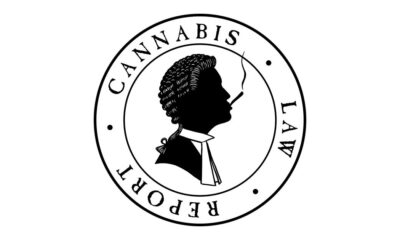

Both Chambers Of Virginia’s Legislature Vote To Legalize Adult Use Cannabis Sales
-


7 best bongs of 2025 by Leafly
-


Texas Citizens Want Legalized Cannabis But
-


Does Derek Maltz at the DEA Now Kill All Cannabis Legalization and Rescheduling Hopes?
Cannabis News
Legal Cannabis Sales in America Totalled How Much in 2024? A. $15 Billion B. $24 Billion C. $30 Billion D. $41.3 Billion
Published
52 minutes agoon
February 5, 2025By
admin

Legal Cannabis Sales in the US Hit $30 Billion in 2024 in the USA!
The legal cannabis industry in the United States achieved a groundbreaking milestone in 2024, with total sales surpassing $30 billion. This remarkable achievement underscores the rapid growth and normalization of cannabis as both a medical and recreational product, reflecting shifting societal attitudes, legislative reforms, and an evolving consumer market. The $30 billion figure represents a significant leap from previous years and highlights the immense potential of this burgeoning industry.
As more states embrace legalization and consumers increasingly turn to cannabis for both therapeutic and recreational purposes, the Industry is poised for continued expansion. This article delves into the factors driving this growth, the challenges facing the sector, and what the future holds for cannabis in the United States.
The Growth Trajectory of Legal Cannabis
The cannabis industry has experienced exponential growth over the past decade. In 2012, Colorado and Washington became the first states to legalize recreational cannabis use, setting the stage for a wave of legalization efforts across the country. By 2024, 23 states had legalized adult-use cannabis, while 38 states had approved medical marijuana programs. This expanding legal framework has created a robust market that continues to attract consumers and investors alike.
In 2024 alone, legal cannabis sales grew by an estimated 14% year-over-year, driven by several key factors:
-
State-Level Legalization: New markets such as New York, Maryland, Missouri, and Connecticut launched adult-use sales in 2023 and 2024, contributing significantly to overall revenue. These states joined established markets like California, Colorado, and Illinois in generating billions of dollars in annual sales.
-
Consumer Demand: According to data from New Frontier Data, approximately **38.4 million U.S. adults** used cannabis in 2024, with many consuming it regularly. The growing acceptance of cannabis as a mainstream product has led to increased demand for diverse products such as edibles, beverages, tinctures, topicals, and vape cartridges.
-
Medical Market Growth: The medical cannabis sector remains a cornerstone of the industry. In 2024, medical marijuana sales accounted for a substantial portion of total revenue, with projections suggesting they could reach $13.1 billion by 2025. Patients use medical cannabis to manage conditions such as chronic pain, anxiety, epilepsy, and multiple sclerosis.
-
Innovation in Product Development: Cannabis companies have invested heavily in research and development to create innovative products that cater to various consumer preferences. For example, low-dose edibles and CBD-infused wellness products have gained popularity among health-conscious consumers seeking alternatives to traditional pharmaceuticals or recreational substances like alcohol.
Economic Impact of Legal Cannabis
The $30 billion milestone is not just a win for cannabis companies—it also represents a significant economic boon for local and state governments. The legal cannabis industry has become a major source of tax revenue, job creation, and business opportunities across the United States.
States with legal cannabis programs have reaped substantial tax benefits from sales. In California alone—the largest cannabis market in the U.S.—the state collected over $1 billion in tax revenue from cannabis sales in 2024. These funds are often allocated toward public services such as education, healthcare programs, infrastructure development, and social equity initiatives aimed at addressing the harms caused by decades of prohibition.
Other states with thriving markets, including Illinois and Colorado, have reported similar financial windfalls. Illinois generated nearly $500 million in tax revenue, while Colorado surpassed $450 million, demonstrating how legalized cannabis can serve as an economic engine for state governments.
The cannabis industry has also become one of the fastest-growing sectors for employment in the U.S., supporting over 500,000 full-time jobs by the end of 2024. These jobs span various roles across cultivation facilities, dispensaries, manufacturing plants, marketing firms, and compliance departments.
As new states continue to roll out their programs and existing markets mature, job opportunities are expected to grow further. According to Leafly’s annual jobs report, the industry could support over 700,000 jobs by 2030 if federal legalization occurs.
Challenges Facing the Cannabis Industry
Despite its impressive growth trajectory, the U.S. cannabis industry faces several challenges that could impact its future development:
Cannabis remains illegal at the federal level under the Controlled Substances Act (CSA), creating significant hurdles for businesses operating within this space. Federal prohibition restricts access to banking services and capital markets while imposing burdensome tax obligations under Section 280E of the Internal Revenue Code.
While there have been efforts in Congress to pass legislation such as the SAFE Banking Act—which would provide cannabis businesses with access to financial services—progress has been slow due to political gridlock.
In some mature markets like California and Oregon, oversupply has led to price declines that have squeezed profit margins for producers and retailers. Additionally, competition from illicit markets continues to pose challenges for legal operators who must comply with strict regulations and higher operating costs.
While legalization has created economic opportunities for many entrepreneurs, critics argue that communities disproportionately impacted by past drug enforcement policies have not benefited equitably from the industry’s growth. Social equity programs aimed at addressing these disparities have faced implementation challenges in several states.
Consumer Trends Shaping the Market
As consumer preferences evolve, several trends are shaping the future of legal cannabis:
-
Health and Wellness Focus: Many consumers are turning to cannabis as part of their wellness routines. Products containing cannabidiol (CBD) or low levels of tetrahydrocannabinol (THC) are particularly popular among those seeking relaxation or relief without intoxication.
-
Sustainability Concerns: Environmentally conscious consumers are demanding sustainable practices within the cannabis supply chain. Companies are responding by adopting eco-friendly cultivation methods and biodegradable packaging solutions.
-
Technology Integration: From online ordering platforms to AI-powered cultivation systems, technology is playing an increasingly important role in streamlining operations and enhancing customer experiences.
The Path Forward: Federal Legalization on the Horizon?
One of the most significant questions facing the U.S. cannabis industry is whether federal legalization will become a reality in the near future. Advocates argue that removing federal restrictions would unlock new opportunities for growth by enabling interstate commerce, international trade partnerships, and broader access to capital.
While bipartisan support for reform has grown in recent years—particularly among younger generations—federal legalization remains uncertain due to political divisions on Capitol Hill.
Global Implications of U.S. Cannabis Growth
The success of the U.S. cannabis market has also had ripple effects globally. Countries such as Canada (which legalized recreational use nationwide in 2018) are closely watching developments south of their border as they seek to refine their own policies.
Meanwhile, European nations like Germany are exploring legalization frameworks inspired by U.S.-style state-level programs—a testament to America’s influence on global drug policy reform efforts.
Conclusion
The $30 billion milestone achieved by legal cannabis sales in 2024 represents more than just a financial achievement—it symbolizes a cultural shift toward acceptance and normalization after decades of prohibition stigma.
As new markets emerge across states like Florida or Pennsylvania (both expected contenders for future adult-use legalization), coupled with advancements like federal reform possibilities—the next decade looks promising!
HEMP DERIVED THC PRODUCTS ARE HURTING CANNABIS SALES, READ ON…
DELTA-8 CANNABIS SALES HIT $2 BILLION IN AMERICA? ALL FROM HEMP?
Cannabis News
Does Derek Maltz at the DEA Now Kill All Cannabis Legalization and Rescheduling Hopes?
Published
24 hours agoon
February 4, 2025By
admin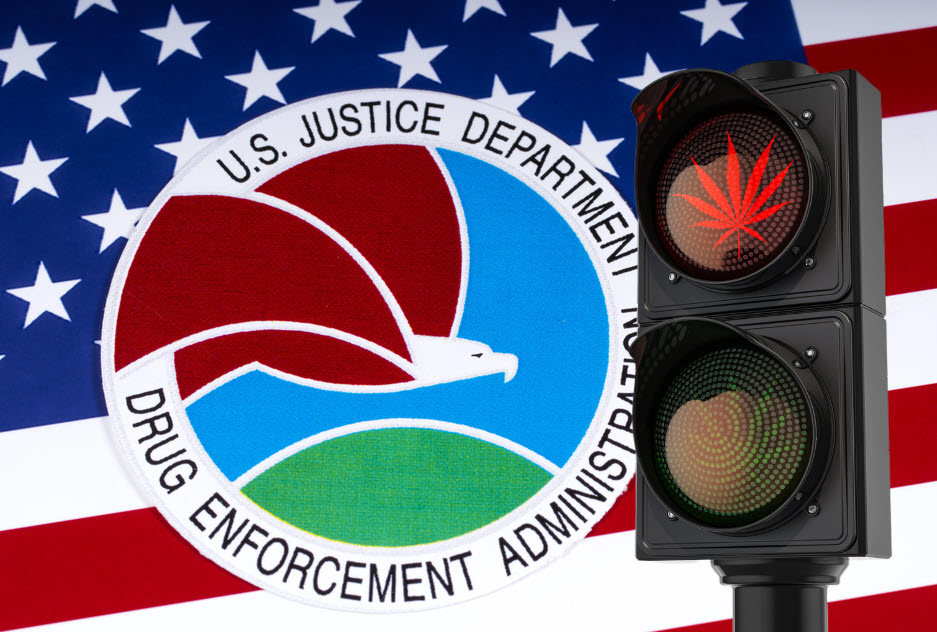
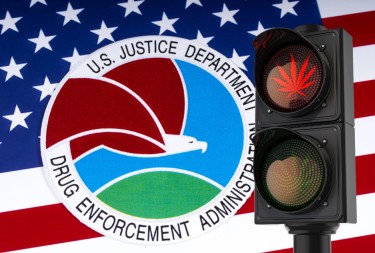
Is There Hope For Cannabis Rescheduling With Maltz In Office?
In January, fear spread across the nation when Derek S. Maltz was appointed as the Drug Enforcement Agency (DEA)’s Acting Administrator.
On January 21st, 2025, he took office, but we’re yet to find out if he’s the great threat to cannabis rescheduling that we think he is. Having Maltz in the DEA office could quite literally be a cannabis prohibitionist’s dream: he has all the right ingredients in place to keep cannabis illegal and stop it from progressing. Rescheduling? Don’t even think about it.
NORML Deputy Director Paul Armentano even commented on the appointment, saying: “The new acting DEA Administrator is a lifelong drug war hawk whose outdated attitudes toward cannabis are out of step with those of most Americans. At a time when most Americans are demanding long overdue changes in federal cannabis policy, Derek Maltz epitomizes the failed policies and approaches of the past.”
You see, Maltz has long been vocal about his skepticism surrounding cannabis, including the benefits it can provide if rescheduled. And while the DEA press release describes Maltz as a “champion” when it comes to fighting global drug trafficking as well as terrorism, he’s not so hot about rescheduling cannabis.
Yes, even if Trump showed support for rescheduling weed! Just last September 2024, Trump posted on his social media site, Truth Social: “As a Floridian, I will be voting YES on Amendment 3 in November.”
“As President, we will continue to focus on research to unlock the medical uses of marijuana to a Schedule 3 drug, and work with Congress to pass common sense laws, including safe banking for state authorized companies, and supporting states rights to pass marijuana laws, like in Florida, that work so well for their citizens,” he said.
However, Maltz openly doubted the legitimacy of government efforts to reclassify cannabis, saying that under Biden, the government was “placing politics above public safety.”
As reported by Marijuana Moment, Maltz also put cannabis in a negative light and said it causes psychosis, during an NTD interview last year during a Turning Point USA event. “Marijuana is not the marijuana from the 70s or the 80s or the 90s. This is higher, pure-THC marijuana,” Maltz said.
“I’ve even talked to doctors about this. It’s actually causing psychosis, schizophrenia, depression, anxiety – so it’s really a gateway drug for these kids that don’t know any better,” Maltz said. “The mental illness – the depression and anxiety – is off the chats in America. So these kids are turning to drugs for help,” he was quoted as saying.
How Else Is Maltz A Threat To Cannabis Legalization?
In addition, Maltz’ decorated career in law enforcement, particularly his strict stance on organized crime and drug trafficking, may influence his positions when it comes to marijuana regulations and the businesses in the industry.
If Maltz continues his focus on policing, this could seriously hurt profits and the industry as a whole. There is no doubt that the political climate is turbulent at best, and with Maltz at the helm, with his claims of focusing on public safety and fighting against drugs, the pro-cannabis camp is more worried than ever. It does not help that the hearings initially scheduled to debate cannabis rescheduling was delayed; it should have pushed through in order to assess the rescheduling proposals so that cannabis may have been on its way to be listed as a Schedule III substance.
Unfortunately, the unstable and chaotic political climate as of late did nothing but delay these discussions.
Furthermore, Maltz might be spending a lot of time, money, and effort on capturing these so-called narco-terrorists during his time in the Drug Enforcement Agency. According to him, traffickers and drug cartels still rule the marijuana markets. This isn’t good if it happens, since this could cause more DEA raids or random, unnecessary investigations in legal cannabis markets. Besides, Maltz thinks that the cartels fuel the black market in America today. Maltz even said: “People aren’t going to pay for marijuana, for example, with these high taxes in these states that have legalized. They’re going to get it from the cartels, and that’s just reality.”
Conclusion
Trump’s stance on marijuana has continued to confuse people; it’s been mixed over the past few years. While Trump himself says supports rescheduling, his administration can quite literally make the decision to stop the rescheduling process completely. After all, administrative law states that if a federal agency hasn’t made a final decision before a new government takes place in the White House, then the appointed president has the freedom to direct that the rules be completely withdrawn.
On that note, we’d need a strong DEA head to change things. Things are hard enough as it is, the last thing we need is an obstacle in the government.
It’s truly unfortunate that we have Maltz in office; with him in leadership, any hopes for progressing on federal cannabis reform might go back to being just a dream. What he does over the next few months could create a serious divide between federal enforcement as well as state legalization efforts, and instead increase the hardships faced by businesses and public health.
While the future seems bleak, we have to keep a close eye on how political negotiations in the Trump Administration will fare in the near future. That said, we must never give up and continue to fight for legalization however we can.
DEA JUDGE STALLS ON CANNABIS, READ ON…
DEA CANCELS CANNABIS HEARING FOR 90 DAYS, NOT A DONE DEAL NOW!
Cannabis News
Why Don’t More U.S. Investors Look Abroad for Marijuana Investment?
Published
1 day agoon
February 4, 2025By
admin
With ongoing tensions between U.S. state and federal marijuana laws, U.S. marijuana investments present significant legal and logistical challenges. This is especially true for investors with ties to federally regulated businesses. While some investors have accepted the risks of U.S. marijuana, others are waiting for major federal reforms. But what if there was a way to invest in marijuana without the looming threat of federal enforcement?
International marijuana operators might offer just that opportunity. Marijuana remains a Schedule I controlled substance within the U.S. (See Thoughts on the Terrible Pageant of Marijuana Rescheduling) Even if marijuana is moved into Schedule III, it will still be illegal to buy and sell interstate without a DEA license, and state markets won’t fundamentally change. This opens the door for investment and operational partnerships in legal marijuana markets abroad — without many of the risks associated with U.S. marijuana operators.
Some U.S. Code provisions relevant to investing in international marijuana markets
21 USC § 841(a)
Makes it illegal to manufacture, distribute, or possess with intent to distribute a controlled substance within the U.S.
21 USC § 959
Extends the reach of the Controlled Substances Act (CSA), criminalizing the intent to import a Schedule I substance into the U.S. This explicit reference to unlawful importation shows that Congress anticipated extraterritorial application of the CSA for certain sections (e.g. § 959) and not others (e.g. § 841(a)).
18 USC § 1956
Criminalizes monetary transactions involving proceeds from “specified unlawful activity”, including violations of the CSA. Unless a foreign investment or operational partnership resulted in the import of marijuana into the U.S., it would not rise to the level of a “specified unlawful activity.”
21 USC §§ 846; 18 USC 371; & 18 USC 2
Both conspiracy and aiding and abetting confer extraterritorial jurisdiction to the same extent as the underlying offense. Therefore, unless the foreign investment resulted in marijuana being imported into the U.S., such investment would not trigger these violations.
Key judicial interpretations on investing in international marijuana markets
The CSA does not speak specifically to foreign investment into an operation that would otherwise be illegal in the U.S. As such, we must look to judicial precedent.
The Supreme Court has emphasized that unless Congress speaks to the extraterritorial application of a law, then it does not generally apply to foreign activities. The relevant issue here centers on whether the foreign activity is intended to, or could reasonably be expected to, result in a violation on U.S. soil. For example, investing in a foreign operator that intends to illegally export marijuana into the U.S., would trigger a CSA violation. However, investing in a foreign operator that intends only to manufacture and sell marijuana outside of the U.S., would not trigger a CSA violation (ensuring robust SOPs and internal oversight policies is also critical).
The leading case on this topic is United States v. LopezVanegas, which relied on Supreme Court precedent on extraterritorial application of U.S. law. The Eleventh Circuit held that where “the object of the conspiracy was to possess controlled substances outside the United States with the intent to distribute outside the United States” the CSA does not apply to those foreign activities. The Court noted that it did not matter whether the alleged conspirators planned some of the operations from within the U.S. The key to a CSA violation centered around whether the conspirators intended to possess or distribute a controlled substance inside the U.S.
Courts in the First Circuit, Fifth Circuit, D.C. Circuit, and the Eastern and Northern District (States v. Daniels, 2010 WL 2557506 (N.D. Cal. June 21, 2010)) have either cited Lopez-Vanegas or reached similar conclusions in cases with both similar and differing circumstances.
What does this mean for international marijuana investment?
These judicial interpretations show that investing in or providing operational support to legal foreign marijuana operators does not pose a risk of violating U.S. law— provided that the investment does not involve importing marijuana into the U.S. While some U.S. banks may remain cautious, these concerns can often be alleviated with a well-supported legal memorandum or opinion.
If you or your team are interested in exploring opportunities to support legal marijuana operations abroad (e.g. Canada, Germany, Thailand, Colombia, Portugal, etc.), please reach out for a free consultation.

Legal Cannabis Sales in America Totalled How Much in 2024? A. $15 Billion B. $24 Billion C. $30 Billion D. $41.3 Billion

Super Bowl another opportunity for cannabis businesses to boost brand and product awareness

Both Chambers Of Virginia’s Legislature Vote To Legalize Adult Use Cannabis Sales

7 best bongs of 2025 by Leafly

Texas Citizens Want Legalized Cannabis But

Does Derek Maltz at the DEA Now Kill All Cannabis Legalization and Rescheduling Hopes?

Why Don’t More U.S. Investors Look Abroad for Marijuana Investment?

Alto Dispensary is a family affair in Tribeca

A Few Jokes To Make Your Monday Better

These states sold more than $1 billion in weed in 2024

Distressed Cannabis Business Takeaways – Canna Law Blog™

United States: Alex Malyshev And Melinda Fellner Discuss The Intersection Of Tax And Cannabis In New Video Series – Part VI: Licensing (Video)

What you Need to Know

Drug Testing for Marijuana – The Joint Blog

NCIA Write About Their Equity Scholarship Program

It has been a wild news week – here’s how CBD and weed can help you relax

Cannabis, alcohol firm SNDL loses CA$372.4 million in 2022

A new April 20 cannabis contest includes a $40,000 purse

Your Go-To Source for Cannabis Logos and Designs

UArizona launches online cannabis compliance online course
Trending
-

 Cannabis News2 years ago
Cannabis News2 years agoDistressed Cannabis Business Takeaways – Canna Law Blog™
-

 One-Hit Wonders2 years ago
One-Hit Wonders2 years agoUnited States: Alex Malyshev And Melinda Fellner Discuss The Intersection Of Tax And Cannabis In New Video Series – Part VI: Licensing (Video)
-

 Cannabis 1012 years ago
Cannabis 1012 years agoWhat you Need to Know
-

 drug testing1 year ago
drug testing1 year agoDrug Testing for Marijuana – The Joint Blog
-

 Education2 years ago
Education2 years agoNCIA Write About Their Equity Scholarship Program
-

 Cannabis2 years ago
Cannabis2 years agoIt has been a wild news week – here’s how CBD and weed can help you relax
-

 Marijuana Business Daily2 years ago
Marijuana Business Daily2 years agoCannabis, alcohol firm SNDL loses CA$372.4 million in 2022
-

 California2 years ago
California2 years agoA new April 20 cannabis contest includes a $40,000 purse






